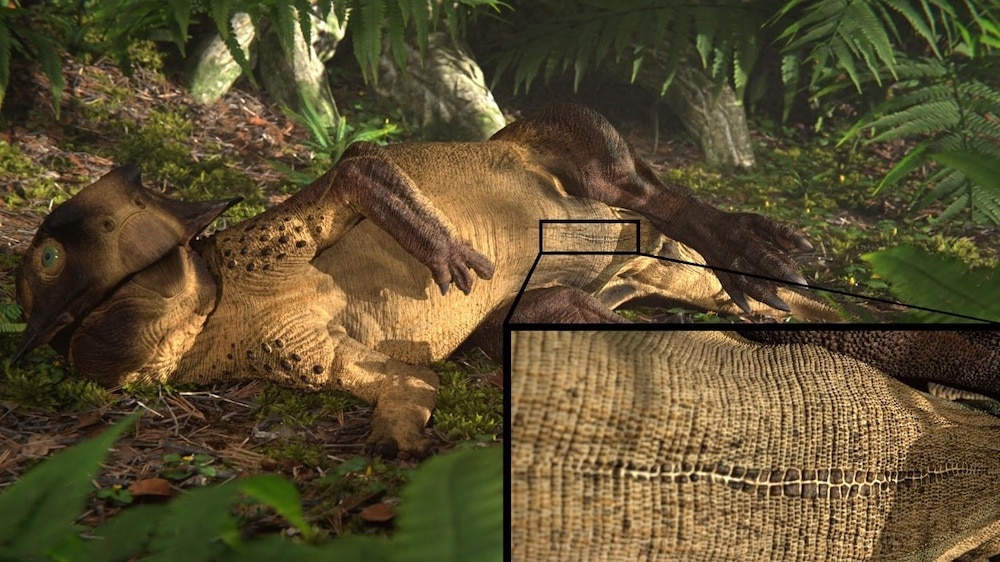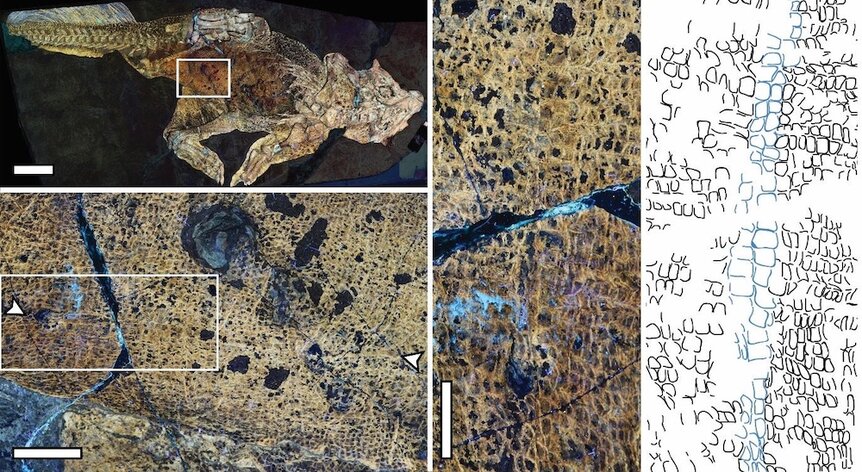Create a free profile to get unlimited access to exclusive videos, sweepstakes, and more!
The world’s oldest known belly button was on an early-Cretaceous dinosaur
Do you think they tickled?

If we lived in a world where happy tourists could travel to a remote island resort and see living dinosaurs — or run for their lives from them like in Jurassic World Dominion (in theaters now!) — so many of our questions about how they lived and what they were like would be answered. Alas, we are dependent on what information we can gather from fossil remains, preserved in rock from tens of millions of years ago.
Despite dinosaurs being one of the first obsessions of nearly every kid, there’s still so much we don’t know. The process of decay and mineralization which happens during fossilization strips dinosaur remains of their surface features, leaving us to infer their appearance and behavior form the bones they leave behind. Sometimes, however, an especially well-preserved animal can retain some surface features, giving us a rare glimpse into their anatomy.
One such fossil is an unusually well-preserved Psittacosaurus studied by Michael Pittman from the School of Life Sciences at the Chinese University of Hong Kong, and colleagues. Previous research into the animal revealed some incredible characteristics including a row of thin porcupine-like quills along its tail, and a preserved cloaca. Now, new imaging techniques have revealed a feature never before seen in dinosaurs: a 130-million-year-old belly button. The findings were published in the journal BMC Biology.
“This is the best-preserved dinosaur if you’re interested in skin, and that’s the reason we have this opportunity. Me and my co-author, Thomas G. Kaye, imaged it with our laser fluorescence technique and that revealed all of this extra information we couldn’t previously see in the specimen,” Pittman told SYFY WIRE.
The technique’s full name is laser-stimulated fluorescence imaging, and it relies on the interactions between laser light and minerals in the fossil to reveal hidden data. A line of laser light is scanned across a specimen in a dark room, creating a long-exposure photograph. When the laser light makes contact with a fossil, it interacts with minerals and comes back out in varying colors, depending on the chemicals it encounters. This gives scientists a chemical map of a specimen which reveals details in the preservation not apparent in visible light.
Using this technique, scientists were able to uncover details in the skin of their Psittacosaurus specimen they hadn’t previously seen, despite 20 years of previous investigation. Chief among the new findings was a row of specialized scales representing an umbilical scar, more commonly known as a belly button.
“Typically, you think of umbilical cords as being a mammal thing. If you look inside the embryo of a bird, which are the only living dinosaurs, or the embryo of a croc which is a close living relative, you’ll find the embryo connects to the yolk sack which provides nourishment and to the allantois which gets rid of waste products,” Pittman said.
That connection is similar in form and function to the umbilical cord we’re familiar with in placental mammals, but it does have some notable differences. Where an umbilical cord is a discrete cable running from the embryo to the placenta, the umbilicus of a bird, reptile, or dinosaur isn’t as well-defined. The connection makes contact with the embryo not at a single point but along a slit on the abdomen. Then, instead of having to be severed after birth, as is the case in mammals, it severs on its own when the animal is ready to hatch, and the slit closes up.
“In some modern species, it heals over perfectly very quickly after birth. In some species, they keep it throughout their lives. Some keep it halfway before it fades away. In the case of our Psittacosaurus, it was just shy of sexual maturity. It’s persisting quite late in its life,” Pittman said.
The high level of umbilical scar variation we find in modern birds and reptiles suggests that dinosaurs might have had a similar level of variation. That likely means that some dinosaurs maintained an umbilical scar well into adulthood while others healed them early in life. That variation exists not just between species, but from individual to individual, according to Pittman.
“We only have one data point but I’m expecting to find more of them, but we need to be in a position where we have specimens of the right quality to find them. We have to be able to look at specimens that preserve the skin, but there aren’t that many of those,” Pittman said.
Of particular interest in the hunt for more belly buttons are some mummified hadrosaur fossils which Pittman thinks might be good candidates, provided the right parts of the body have been preserved. Applying new imaging techniques to existing fossil stores, could reveal previously unseen features in animals which are, and have been, right under our noses.
While the current population of belly-buttoned dinosaurs consists of a sample size of one, it’s likely that many or most dinosaurs had them, and there’s something about that knowledge which makes them feel more real somehow. As different as we are, we share a tangible connection, small imperfections in our bodies which leave a lasting reminder of the unbroken chain of life stretching from today, all the way back to the Cretaceous and beyond.



























